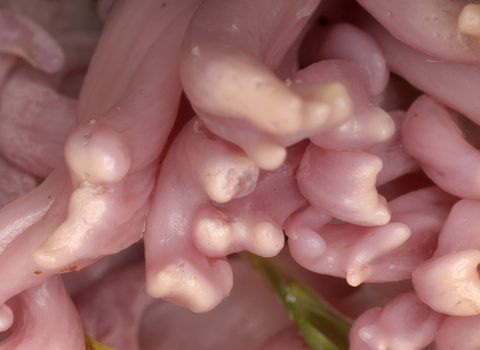
Violet coral ©Dr Malcolm Storey
Violet coral
The branching, finger-like projections of this fungus give it the appearance of an underwater coral. Its striking colour and form make it easy to spot, but it is scarce in the UK.

Violet coral ©Dr Malcolm Storey